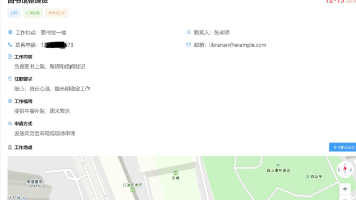大模型工程化:解决实际部署中遇到的挑战与解决方案(含代码)
这其中涉及的挑战远不止模型本身的性能,还包括部署效率、资源利用、成本控制、稳定性、可维护性以及可扩展性等一系列复杂问题。大模型工程化是一个系统工程,需要将模型、推理引擎、API服务、容器化、基础设施、监控报警和安全能力融为一体。FastAPI作为代理(可选): 如果需要在vLLM API之上添加额外的逻辑(如身份验证、限流、日志更丰富),可以在FastAPI中写一个简单的代理,转发请求到vLLM的
将动辄数十亿甚至上万亿参数的大型语言模型(LLMs)从实验环境推向生产环境,绝非易事。工程化是将前沿AI能力转化为实际业务价值的桥梁。这其中涉及的挑战远不止模型本身的性能,还包括部署效率、资源利用、成本控制、稳定性、可维护性以及可扩展性等一系列复杂问题。
本文将聚焦于大模型工程化中普遍遇到的实际问题,并提供针对性的解决方案和代码示例。我们将深入探讨模型优化、高效推理服务、弹性伸缩、版本管理、监控与日志以及安全性等关键工程实践。
一、 工程化部署的痛点与挑战
在将大模型投入生产时,开发者和运营者常常会遇到以下痛点:
模型体积庞大,加载缓慢: 大型模型文件通常有GB甚至TB级别,导致容器启动慢,更新部署耗时。
推理速度与延迟: LLMs的推理计算量巨大,难以满足低延迟场景的需求。
高昂的硬件成本: LLMs通常需要高端GPU才能达到可接受的性能,这带来了巨大的成本压力。
复杂的依赖管理: 模型可能依赖特定的CUDA版本、Python库、框架(PyTorch, TensorFlow)等,环境配置复杂易出错。
缺乏弹性伸缩: 无法根据实时负载自动增减资源,导致流量高峰时服务不可用,低谷时资源浪费。
模型版本管理与回滚: 如何平滑地更新模型、管理多个模型版本,并在出现问题时快速回滚。
监控与可观察性: 缺乏对模型性能(如推理延迟、GPU利用率、输出质量)、服务健康状态的及时感知。
安全性问题: 模型推理API的访问控制、数据安全、防注入攻击等。
二、 解决方案:端到端工程化实践
我们将围绕上述痛点,展开逐一击破。
1. 模型优化与高效推理
a. 模型量化 (Quantization)
目的: 降低模型精度(如从FP32到FP16/BF16/INT8)来减小模型体积、降低显存占用,并加速推理。
方法:
模型下载时自带量化版本: Hugging Face Hub上很多模型都提供了量化版本(如GPT-Q, AWQ)。
运行时量化: 使用bitsandbytes、AutoGPTQ等库在加载模型时进行量化。
示例 (app/model_loader.py):
<PYTHON>
import torch
from transformers import AutoModelForCausalLM, AutoTokenizer
from transformers import BitsAndBytesConfig # For 4-bit quantization
def load_optimized_model(model_id: str, device: str = "cuda", quantize: bool = False):
"""
Loads a model with optimization options.
"""
if quantize:
# Example: 4-bit quantization (NF4)
quantization_config = BitsAndBytesConfig(
load_in_4bit=True,
bnb_4bit_compute_dtype=torch.float16, # Or torch.bfloat16 if supported
bnb_4bit_use_double_quant=True,
bnb_4bit_quant_type="nf4"
)
print(f"Loading model '{model_id}' with 4-bit quantization...")
model = AutoModelForCausalLM.from_pretrained(
model_id,
quantization_config=quantization_config,
device_map="auto", # Automatically distribute model across available GPUs
trust_remote_code=True # If your model needs custom code
)
else:
print(f"Loading model '{model_id}' with default precision (FP16/BF16 if available)...")
model = AutoModelForCausalLM.from_pretrained(
model_id,
torch_dtype=torch.float16, # Use float16 for faster inference and reduced memory
device_map="auto",
trust_remote_code=True
)
tokenizer = AutoTokenizer.from_pretrained(model_id)
# Add padding token if it doesn't exist (common for models like GPT-2/3)
if tokenizer.pad_token is None:
tokenizer.pad_token = tokenizer.eos_token
model.config.pad_token_id = model.config.eos_token_id
print(f"Model '{model_id}' loaded successfully on device: {device if device == 'cuda' else 'CPU'}")
return model, tokenizer
# Example usage (within your FastAPI service):
# model_id = "meta-llama/Llama-2-7b-chat-hf"
# model, tokenizer = load_optimized_model(model_id, quantize=True)
b. 高性能推理引擎
vLLM: 专为LLM优化的高吞吐量、低延迟推理引擎。支持PagedAttention,Continuous Batching,通过OpenAI兼容API提供服务。
TensorRT-LLM: NVIDIA推出的用于加速LLM推理的库,针对NVIDIA GPU进行高度优化。
Hugging Face TGI (Text Generation Inference): TGI提供了高性能的推理服务,同样支持OpenAI兼容API。
选择建议:
vLLM 是目前流行且易于集成的选择,尤其适合需要高吞吐量和低延迟的场景。
TensorRT-LLM 在NVIDIA GPU上通常能达到最高性能。
TGI 是一个很好的通用选择,上手简单。
示例(如何使用vLLM作为后端):
您可以将CustomModelService替换为vLLM的API代理。
部署vLLM OpenAI API Server:
<BASH>
python -m vllm.entrypoints.openai.api_server \
--model meta-llama/Llama-2-7b-chat-hf \
--tensor-parallel-size 1 \ # Adjust based on your GPU count
--port 8000 \
--served-model-name llama2-7b \
--trust-remote-code
FastAPI作为代理(可选): 如果需要在vLLM API之上添加额外的逻辑(如身份验证、限流、日志更丰富),可以在FastAPI中写一个简单的代理,转发请求到vLLM的8000端口。
2. 模型文件管理与按需加载
痛点: 模型文件巨大,一次性打包进Docker镜像不现实。
解决方案:
Pod启动时从外部拉取:
Init Containers: 在主容器启动前,使用Init Container从对象存储(S3, GCS)、NFS或Git LFS拉取模型数据。
Kubernetes CSI (Container Storage Interface): 使用CSI驱动挂载NFS、CephFS、AWS EBS/EFS、Google Persistent Disk等卷,将模型数据作为持久化存储。
Sidecar容器: 另一个容器负责下载模型,下载完成后通知主应用。
动态加载/卸载:
对于服务于多个模型(Model Zoo)的场景,实现模型在内存中的动态加载和卸载。这需要精心设计的模型管理服务,并注意显存的管理。
示例 (k8s/deployment-with-model-volume.yaml):
假设模型文件存储在NFS卷中(已挂载到/mnt/models)。
<YAML>
apiVersion: apps/v1
kind: Deployment
metadata:
name: llm-api-dynamic-model
namespace: default
labels:
app: llm-api-dynamic
spec:
replicas: 1 # For simplicity, start with 1 replica for dynamic loading.
selector:
matchLabels:
app: llm-api-dynamic
template:
metadata:
labels:
app: llm-api-dynamic
spec:
containers:
- name: llm-api-container
image: your-dockerhub-username/your-fastapi-base:v1.0.0 # Contains FastAPI, model loading logic, but NOT the models
ports:
- containerPort: 8000
resources:
requests:
cpu: "2"
memory: "8Gi"
limits:
cpu: "4"
memory: "16Gi"
# Mount the volume containing the model files
volumeMounts:
- name: model-storage-volume
mountPath: /app/models # Your application will load models from here
env:
- name: MODEL_DIR # Tell the app where models are located
value: "/app/models"
- name: DEFAULT_MODEL_ID # e.g., "models/llama-2-7b"
value: "models/llama-2-7b"
volumes:
- name: model-storage-volume
persistentVolumeClaim:
claimName: nfs-model-pvc # Assume you have a PVC named nfs-model-pvc pointing to your NFS server
在app/main.py中,load_optimized_model函数需要修改为从MODEL_DIR环境变量指定的路径加载模型。
<PYTHON>
# In app/main.py, modify load_optimized_model
import os
def load_optimized_model(model_dir: str, model_subdir: str="llama-2-7b", device: str = "cuda", quantize: bool = False):
model_path = os.path.join(model_dir, model_subdir)
# ... rest of the loading logic using model_path
3. 弹性伸缩:基于GPU利用率
痛点: 无法根据实际负载动态调整GPU资源,导致服务不可用或资源浪费。
解决方案: 使用Kubernetes的Horizontal Pod Autoscaler (HPA),结合KEDA(Kubernetes Event-driven Autoscaling)和Prometheus + DCGM Exporter。
a. Prerequisites:
NVIDIA Device Plugin: 已安装,注册nvidia.com/gpu资源。
Prometheus: 已部署,用于收集监控数据。
DCGM Exporter: 部署在Node节点上(通常是DaemonSet),用于收集GPU相关指标(如DCGM_FI_DEV_GPU_UTILIZATION)。
KEDA Operator: 已安装,负责根据自定义指标触发HPA。
b. Prometheus配置 (Scrape Job for DCGM Exporter)
在Prometheus的prometheus.yml中,确保有针对DCGM Exporter的scrape配置:
<YAML>
scrape_configs:
# Scrape Prometheus metrics from K8s API and other components
- job_name: 'kubernetes-nodes'
kubernetes_sd_configs:
- role: node
relabel_configs:
... # standard K8s relabels
- job_name: 'dcgm-exporter'
kubernetes_sd_configs:
# Discover pods with the dcgm-exporter label, usually running as a DaemonSet
- role: pod
relabel_configs:
- source_labels: [__meta_kubernetes_pod_label_app]
action: keep
regex: dcgm-exporter # Assuming your DCGM exporter pods have app=dcgm-exporter label
- source_labels: [__meta_kubernetes_pod_label_app_kubernetes_io_name] # Example for if you use Helm chart
action: keep
regex: nvidia-device-plugin-dcgm-exporter # Example if using Helm for DCGM
# If DCGM exporter is a DaemonSet, ensure it's scraped
- source_labels: [__meta_kubernetes_pod_annotation_prometheus_io_scrape]
action: keep
regex: true
- source_labels: [__meta_kubernetes_pod_annotation_prometheus_io_path]
action: replace
target_label: __metrics_path__
- source_labels: [__meta_kubernetes_pod_annotation_prometheus_io_port]
action: replace
target_label: __address__
regex: (\d+);.*
replacement: ${1}
- source_labels: [__meta_kubernetes_namespace]
action: replace
target_label: namespace
- source_labels: [__meta_kubernetes_pod_name]
action: replace
target_label: pod
重要: 你需要精心编写PromQL查询,来聚合你的AI服务的Pod们的GPU利用率。
c. KEDA ScaledObject for GPU Utilization
k8s/hpa-gpu-utilization.yaml (与之前示例类似,但更侧重查询的精确性)
<YAML>
apiVersion: keda.sh/v1alpha1
kind: ScaledObject
metadata:
name: llm-api-gpu-autoscaler
namespace: default # Your namespace
spec:
scaleTargetRef:
kind: Deployment
name: llm-fastapi-app # Target your FastAPI deployment
minReplicaCount: 1
maxReplicaCount: 10 # Adjust max replicas based on your GPU node capacity
triggers:
- type: prometheus
metadata:
serverAddress: http://prometheus-service.monitoring.svc.cluster.local:9090 # Your Prometheus service address
threshold: "70" # Scale up when average GPU utilization > 70%
# Robust PromQL query for average GPU utilization of pods matching the deployment selector
# target_deployment: llm-fastapi-app
# The query sums up GPU utilization for all pods related to the deployment, AVERAGES it per pod,
# then calculates the overall average, and multiplies by 100 to get a percentage.
# Ensure 'job="dcgm-exporter"' matches your Prometheus config.
# Ensure 'pod=~"llm-fastapi-app-xxxx"': Use regex to match all pods created by the deployment.
query: |
avg(
avg by (pod) (
rate(dcgm_gpu_utilization{job="dcgm-exporter", pod=~"llm-fastapi-app-.*"}[5m])
)
) * 100
# This is the metric name that K8s HPA will look for via custom.metrics.k8s.io
metricName: gpu-utilization
scalerTargetQuery: "avg(pod(gpu-utilization))" # KEDA uses this to get the average value for scaling
部署(请确保KEDA和Prometheus已就绪):
<BASH>
kubectl apply -f k8s/hpa-gpu-utilization.yaml
4. 模型版本管理与滚动更新
痛点: 模型更新时,需要确保服务平滑切换,数据不丢失,且可快速回滚。
解决方案:
Kubernetes Deployment: 使用Deployment的rollingUpdate策略。
maxUnavailable: 在更新过程中,允许不可用的Pod的最大数量。
maxSurge: 在更新过程创建的新Pod数量,超出ReplicaSet初始数量。
Docker Tagging: 为每个模型版本使用不同的Docker镜像Tag(如v1.0.0, v1.1.0)。
Git LFS/Model Registry: 模型文件本身也需要版本管理。
示例 (k8s/deployment-rolling-update.yaml - 调整spec.strategy):
<YAML>
apiVersion: apps/v1
kind: Deployment
metadata:
name: llm-api-app-v2
namespace: default
labels:
app: llm-api
version: v2 # Label to distinguish versions
spec:
replicas: 3
selector:
matchLabels:
app: llm-api
version: v2 # Selector should match the new version's pods
strategy:
type: RollingUpdate
rollingUpdate:
maxUnavailable: 1 # Allow one pod to be unavailable at a time
maxSurge: 1 # Allow one new pod to be created above the desired replica count
template:
metadata:
labels:
app: llm-api
version: v2 # New version label
spec:
containers:
- name: llm-api-container
image: your-dockerhub-username/your-llm-api:v2.0.0 # New Image Tag
# ... rest of container spec
更新流程:
构建新的Docker镜像,例如your-llm-api:v2.0.0。
创建一个新的Deployment(如llm-api-app-v2)或修改现有Deployment的image字段:
更新现有Deployment: kubectl set image deployment/llm-fastapi-app llm-fastapi-container=your-dockerhub-username/your-llm-api:v2.0.0
创建新Deployment: kubectl apply -f k8s/deployment-rolling-update.yaml (然后更新Ingress指向新Deployment的Service)
Kubernetes将缓慢地替换旧Pod为新Pod,保持服务可用。
回滚:
kubectl rollout history deployment/llm-fastapi-app 查看历史版本。
kubectl rollout undo deployment/llm-fastapi-app 回滚到上一版本。
kubectl rollout undo deployment/llm-fastapi-app --to-revision=<revision_number> 回滚到特定版本。
5. 监控、日志与可观察性
痛点: 实时了解模型性能、服务状态,快速定位问题。
解决方案: 整合Prometheus (Metrics) + Grafana (Dashboard) + Loki/ELK (Logs) + OpenTelemetry (Tracing)。
Metrics:
FastAPI Metrics: 集成prometheus_client库,暴露API请求数、延迟、错误率等。
Model Metrics: 在CustomModelService中,记录和暴露模型推理相关的性能指标:
model_inference_latency_seconds (Histogram)
model_tokens_generated_total (Counter)
model_gpu_utilization_percent (Gauge - from DCGM exporter)
model_gpu_memory_used_gb (Gauge - from DCGM exporter)
Kubernetes Metrics: GPU利用率、Pod CPU/Memory使用率等。
Logs:
Docker Logging Driver: 配置Kubernetes节点或Pod使用json-file或fluentd/loki等stdout/stderr日志驱动,将日志发送到中心化的日志系统。
Detailed Logging: 在FastAPI服务中,对模型加载、推理过程、参数、错误信息进行详细日志记录。
Dashboard:
使用Grafana可视化Prometheus/Loki数据,创建AI服务监控面板,展示关键指标。
示例 (app/main.py - 添加Prometheus Metrics):
<PYTHON>
from fastapi import FastAPI, Request, HTTPException
from prometheus_client import Counter, Histogram, Gauge, make_asgi_app
import time
import uuid
import json
import asyncio
from typing import List, Optional, Dict
# Prometheus Metrics
REQUEST_COUNT = Counter('fastapi_requests_total', 'Total number of API requests', ['method', 'endpoint'])
REQUEST_LATENCY = Histogram('fastapi_request_latency_seconds', 'API request latency in seconds', ['method', 'endpoint'])
MODEL_INFERENCE_LATENCY = Histogram('model_inference_latency_seconds', 'Model inference latency in seconds')
MODEL_GPU_UTILIZATION = Gauge('model_gpu_utilization_percent', 'GPU Utilization of the model')
# ... other metrics
# CustomModelService modification
class CustomModelService:
# ... (previous init, load_model, etc.) ...
async def infer(self, request_data: ChatCompletionRequest):
start_time = time.perf_counter()
try:
# --- Model Inference ---
# Wrap your actual inference call with latency tracking
inference_start_time = time.perf_counter()
# Simulate model processing
await asyncio.sleep(random.uniform(0.5, 2.0))
generated_length = random.randint(50, 500) # Simulate token generation
MODEL_INFERENCE_LATENCY.observe(time.perf_counter() - inference_start_time)
# ... actual inference ...
# Update GPU utilization metric (this would typically come from an external source like DCGM exporter)
# For simulation, we can set a dummy value. In a real setup, this is queried.
# MODEL_GPU_UTILIZATION.set(random.uniform(30, 90))
return generated_length # Simplified response
finally:
total_latency = time.perf_counter() - start_time
# Record completion of inference logic regardless of success/failure
pass # The latency is already observed
# ... FastAPI Application Setup ...
app = FastAPI() # ...
# Register Prometheus metrics endpoint
metrics_app = make_asgi_app()
app.mount("/metrics", metrics_app)
# Decorator for Prometheus metrics
@app.middleware("http")
async def add_metrics_middleware(request: Request, call_next):
start_time = time.perf_counter()
response = await call_next(request)
# Record request count and latency
REQUEST_COUNT.labels(method=request.method, endpoint=request.url.path).inc()
REQUEST_LATENCY.labels(method=request.method, endpoint=request.url.path).observe(time.perf_counter() - start_time)
return response
# ... (Your /v1/chat/completions endpoint) ...
6. 安全性考量
API Key/Authentication: 在Ingress层或FastAPI应用中实现API Key校验,限制未授权访问。
TLS/SSL: 使用Ingress Controller配置HTTPS,确保数据传输安全。
Input Validation: 严格校验用户输入的Prompt,防止Prompt Injection、恶意代码注入等。
Rate Limiting: 对API请求进行限流,防止DDoS攻击和滥用。Nginx Ingress Controller提供了此功能。
Resource Limits: 限制Pod的CPU/Memory/GPU资源,防止单个Pod耗尽节点资源。
三、 总结
大模型工程化是一个系统工程,需要将模型、推理引擎、API服务、容器化、基础设施、监控报警和安全能力融为一体。通过精心的架构设计和充分的准备,我们可以有效应对模型体积庞大、推理成本高昂、部署复杂、弹性不足等挑战。
选择合适的优化与推理引擎: 模型量化、vLLM、TensorRT-LLM是关键。
重塑模型文件管理: Init Container、CSI卷、对象存储拉取是必需的。
基于GPU利用率实现弹性伸缩: KEDA+Prometheus+DCGM Exporter是强大的组合。
精细化版本管理: Deployment滚动更新和Git LFS是保障平滑升级的关键。
构建完善的可观察性: Metrics, Logs, Tracing是必不可少的。
掌握这些工程实践,您将能够更自信地将最先进的大模型能力,稳定、高效、大规模地部署到您的业务场景中。
更多推荐
 已为社区贡献7条内容
已为社区贡献7条内容








所有评论(0)